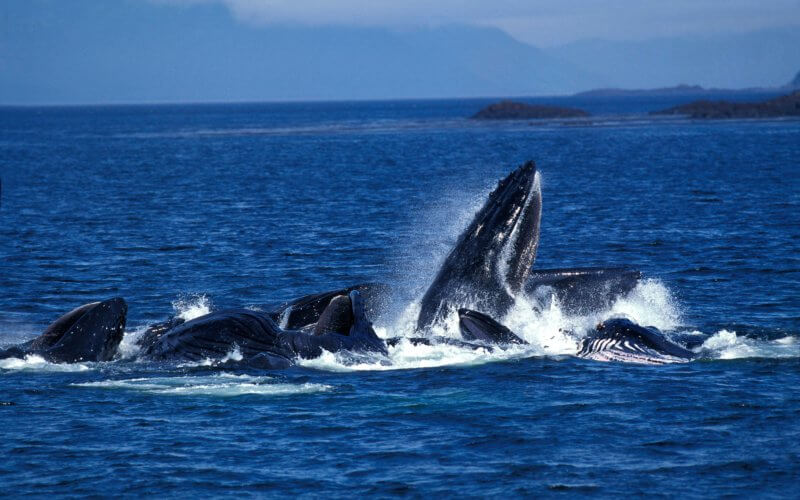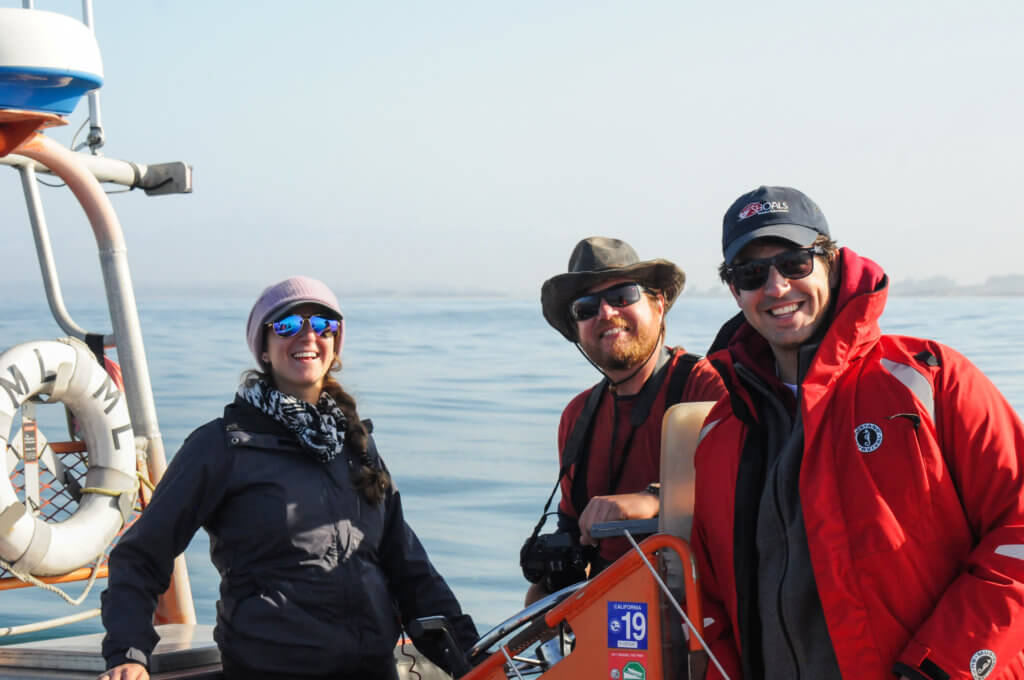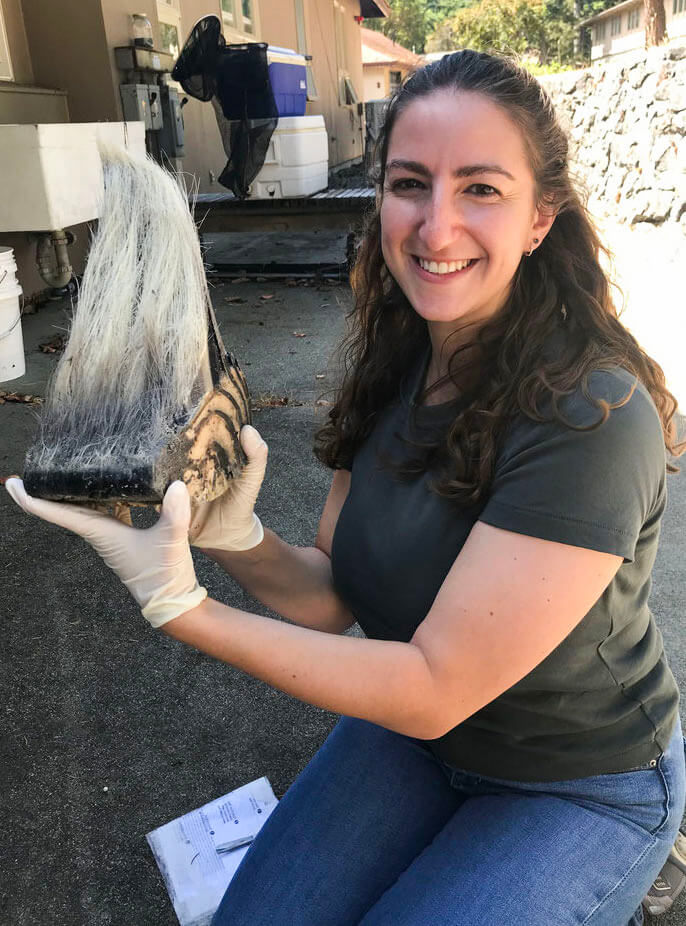
A new collaborative study reveals that filter-feeding baleen whales ingest millions of pieces of microplastics — and consume more plastic than any other ocean organism.
The study found that most microplastics — small particles of plastics measuring less than five millimeters — consumed by baleen whales are from the prey they eat, and not from the water, said Cal State Fullerton postdoctoral scholar Shirel Kahane-Rapport, lead researcher of the study.
“We found that 99% of microplastic ingestion comes from the food the whales eat, such as krill,” Kahane-Rapport said. “Microplastic pollution is a rapidly growing problem, and this work is a first step in understanding how it affects these oceanic giants.”
Microplastics also pose an even greater risk to bigger baleen whales, like the blue whale, the biggest animal on Earth. Baleen whales, which includes blue, humpback, gray and fin whales, are toothless and have a filter-feeding system inside their mouths.
The findings highlight how the blue whale can eat about 10 million pieces of microplastic pieces per day and a fin whale will consume 5.4 million pieces. Humpback whales that eat fish consume about 200,000 pieces per day, but humpbacks that consume krill ingest about 1 million pieces of microplastic per day.
The study was published Nov. 1 in the peer-reviewed, open access scientific journal Nature Communications, with Kahane-Rapport as the paper’s first author. The research examines the foraging behavior of baleen whales along California’s coast and how that overlaps with microplastic distributions in the water column.
Kahane-Rapport’s research collaborators and co-authors of the journal paper are from Stanford University, UC Santa Cruz, Cascadia Research Collective in Washington, and NOAA Southwest Fisheries Science Center in Monterey.

Neither the amount nor pathway of microplastic ingestion by baleen whales is well understood. These whales may be at higher risk of microplastic ingestion due to their filter-feeding behaviors, immense prey consumption and habitat overlap with polluted regions, such as the California Current, the researchers stated.
In search of answers, the researchers studied blue, fin and humpback whales to measure plastic ingestion rates and routes of exposure. The study’s authors also suggest that these whales may also be at risk of cumulative physiological and toxicological effects of consuming microplastics.
“The ocean is often the garbage dump for humanity’s waste. Eventually, what we put into the ocean will come back to affect us,” Kahane-Rapport noted. “Microplastics and macroplastics enter the ocean at alarming rates. Studying whales allows us to see how plastic is moving up the food chains.”

The study showed that baleen whales mostly feed at depths from 160 feet to 820 feet, which coincides with the highest measured microplastic concentrations in the ecosystem, Kahane-Rapport added.
Kahane-Rapport began working on the research in 2016 as a doctoral student at Stanford. She earned her doctorate in June 2021 and is now conducting marine biology research under the mentorship of CSUF’s Misty Paig-Tran, associate professor of biological science. Her current research focuses on how baleen whales use baleen plates to filter food.
“Dr. Kahane-Rapport has taken on the monumental task of creating the first truly viable estimations of potential microplastic contamination in filter-feeding whales,” said Paig-Tran, whose students are studying the impact of microplastics entering and moving through the marine food chain, including to Pacific sardines.
“I applaud the team’s efforts to collect microplastics at the depths where whales are actively feeding. This study is truly sombering — and a step forward toward understanding how human microplastic debris can have far reaching effects, even on the world’s largest animals.”
For the study, the researchers tagged a total of 191 baleen whales with Customized Animal Tracking Solutions (CATS) tags, Digital Acoustic Recording (DTAG) tags and medium duration dart tags.
Deployments were collected from 2010 through 2019 and recorded whales feeding within Southern California’s Channel Islands, and the Northern California coastal waters of Monterey Bay, the Gulf of the Farallones and Cordell Bank National Marine Sanctuary.
With more plastic pollution entering marine food webs, it’s increasingly important to determine the mechanisms and extent of plastic ingestion in marine species.
“Our work has shown that rorqual whales, a family of baleen whales and the largest consumers on Earth, are also likely to be the largest consumers of plastic on an absolute basis,” Kahane-Rapport said.
“Furthermore, baleen whales eating and excreting microplastic on their feeding grounds may affect distribution of plastic in the water column in still unknown ways. Linking microplastic ingestion rates to the effects of microplastics on marine life is a crucial next step to meet conservation and sustainability challenges.”